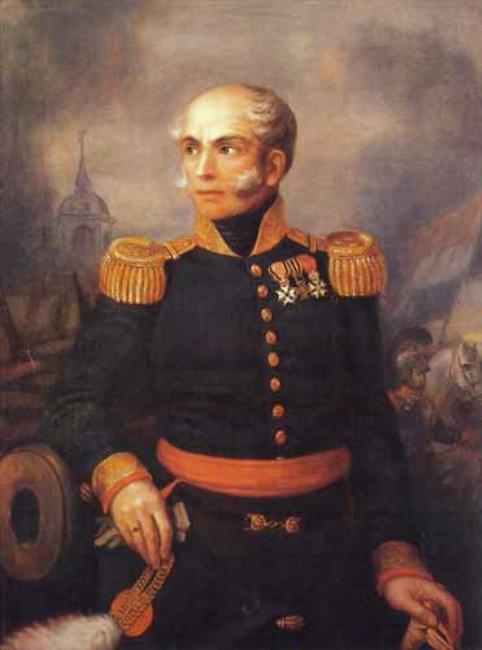
 |
| Fig. 23: Portrait of general Dibbets |
Linked to these two 'autonomous' religious communities, each of which had its own secular chapter with canons, there were also two secular 'lords', who formally exercised authority in the city. Linked to the Servatius abbey was the German emperor, then the Duke of Brabant and his heirs, then the States of Holland. Linked to the Church of Our Lady was the Prince-Bishop of Liège, a secular-religious-leader. Those two lords each had their own board: so two mayors, two magistrates, two sets of aldermen and two councils. When they were all together, there was 'the undivided council'. That was the core of Maastricht's dual lordship, with the two autonomous chapters next to it, with their own jurisdiction, their own immunities. To complete this overview, from 1567 there was also a military governor, supported by a military commander of the fortress, who had military command over the fortress in times of war and siege. Since the town was the fortress, he was in charge of the town during those moments. There were often power disputes between the military governor and the city government. The people of Maastricht cleverly played their dual lordship for centuries and deviously (ab)used the double lordship. This made Maastricht de facto an autonomous city, in other words, a city-state.
 |
| Fig. 24: In Maastricht some people still prefer the French banner above the Dutch one |
The French put an end to this in 1795 and canceled the independent status of the city leaving Maastricht to become a departmental capital and part of the French Empire. After the French era and as a result of the Congress of Vienna in 1815, Maastricht became a Dutch town. For a short period of time, some inhabitants of the town, together with the later Belgians, tried to force a secession from Holland, during which there was a fight between the French-minded and Liège-related inhabitants on the one side and the pro-Holland inhabitants. As a result of the efforts of the fortress commander General Dibbets - a 'Dutchman/Hollander' from Arnhem - Maastricht became definitively part of the Kingdom of the Netherlands in 1839. The effect of the dual lordship and the Belgian uprising has not yet come to an end and many Maastricht residents still regret the decision in which Maastricht was assigned to the Netherlands.
Reference:
Ubachs, P.J.H., & I.M.H. Evers, Historische Encyclopedie Maastricht, Zutphen 2005.